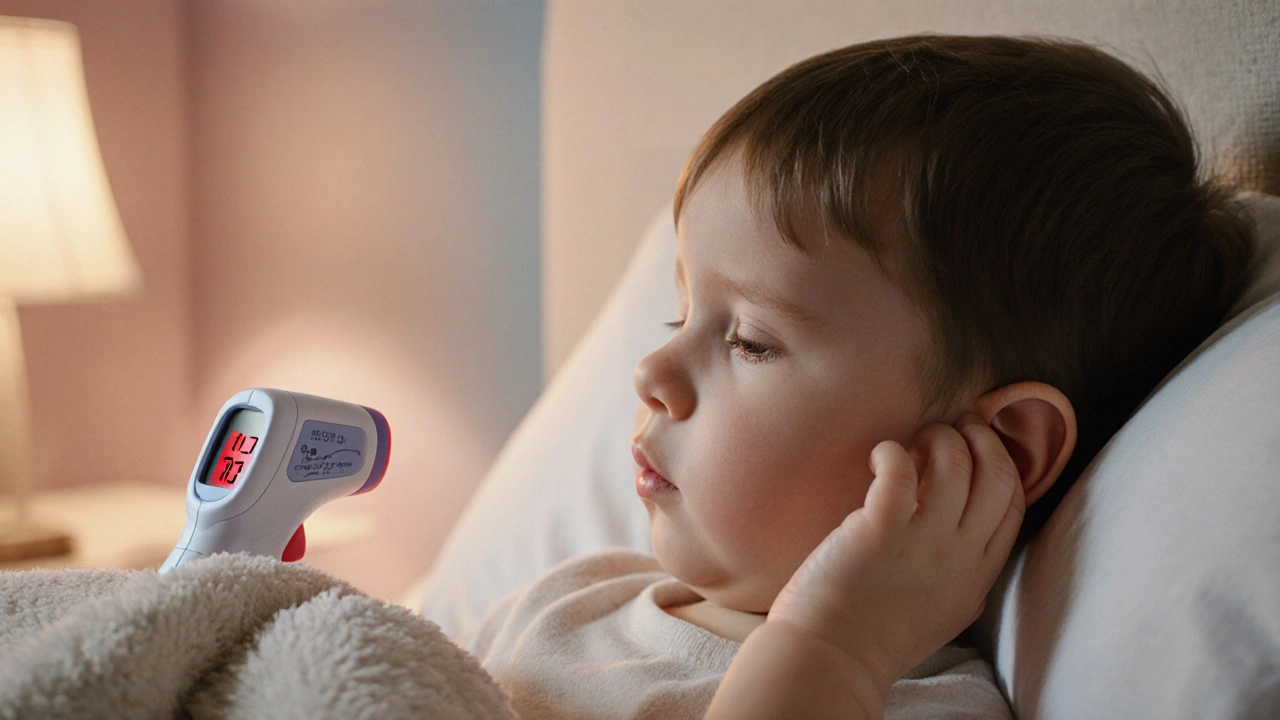Otitis Media Fever – What You Need to Know
When dealing with otitis media fever, a condition where a middle‑ear infection is paired with an elevated body temperature. Also known as ear infection fever, it often shows up in kids but can affect adults too. The otitis media, inflammation of the middle ear usually caused by bacteria or viruses creates fluid build‑up behind the eardrum, and the body reacts with a fever, a rise in core temperature that signals infection. Together they form a feedback loop: the hotter you get, the more blood flows to the area, which can increase ear pressure and pain. Understanding this loop helps you break it quickly with the right tools. Otitis media fever isn’t just a nuisance; if left unchecked it can lead to hearing loss, balance problems, or even spread to nearby structures. That’s why early recognition and proper care matter.
Key Players in Managing Otitis Media Fever
First off, antibiotics, medications that kill or stop the growth of bacteria causing the ear infection are the frontline defense when a bacterial cause is confirmed or strongly suspected. A doctor will usually pick amoxicillin or a similar drug, dosing it based on age and weight. If you’re worried about side effects, ask about alternatives like azithromycin, which can be easier on the stomach. While antibiotics fight the infection, pain relievers, over‑the‑counter options such as acetaminophen or ibuprofen that lower fever and ease discomfort tackle the fever and ear pain directly. Give the correct dose every four to six hours and watch for any rash or stomach upset. Some parents also use warm compresses on the cheek near the ear; the heat can improve blood flow and make the pressure feel less intense. Hydration plays a hidden but vital role—drinking plenty of fluids helps thin the mucus in the middle ear, making it easier for the body to clear the infection.
Beyond meds, knowing when to seek professional help can prevent complications. If the fever stays above 102°F (38.9°C) for more than 48 hours, if pain worsens despite medication, or if you notice drainage from the ear, it’s time to call a doctor. Children under six months with any fever should be evaluated promptly, because their immune systems are still developing. For older kids who recover quickly, a short course of antibiotics plus rest often does the trick. After treatment, follow‑up visits confirm the infection has cleared and check that hearing is back to normal. In rare cases, a tympanostomy tube may be recommended to keep the middle ear ventilated and avoid future bouts. By staying on top of these steps, you turn a potentially scary situation into a manageable one.
Now that you understand the main players—otitis media, fever, antibiotics, and pain relievers—you’ll be ready to spot the warning signs early and act fast. Below you’ll find a curated mix of articles that dive deeper into each aspect, from choosing the right antibiotic to handling ear pain at home, plus tips on when to call the doctor. Use this knowledge to keep the ear infection in check and get back to feeling normal sooner.
How Fever Signals an Ear Infection: Causes, Symptoms, and When to Get Help
Learn why fevers often accompany ear infections, spot key symptoms, know treatment steps, and find out when a doctor’s visit is essential.
© 2025. All rights reserved.

